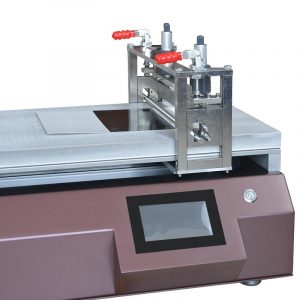Abstract.
Vacuum coating technology is a reliable surface coating method, which is widely used in electronic, optical, medical and other fields. This article will deeply explore the core technology of vacuum coating machine, including working principle, key components and core technical parameters, to provide readers with a comprehensive understanding.
1. Introduction
As an efficient and precise surface treatment method, vacuum coating technology has achieved great success in various fields. One of the reasons for its wide application is the core technology of vacuum coating machine. This paper will deeply study the key technology of vacuum coating machine, in order to reveal the mystery of this field for readers.

2. How it works
The vacuum coating machine can control the surface properties of the material by coating the film on the target object in the vacuum environment. Its working principle mainly includes evaporation, sputtering and ion assisted processes.
2.1 Evaporation
Evaporation is one of the main processes of vacuum coating. In the vacuum chamber, the target material is heated to its evaporation temperature by means of electron beam and resistance heating, so that it changes from a solid state to a gas state. The purpose of evaporation is to produce steam and form a film.
2.2 Sputtering
Sputtering is another common coating method. In the vacuum chamber, the target material is formed into ions by introducing inert gas or argon, etc., and then these ions are sputtered to the surface of the substrate through the action of an electric field to form a uniform film.
2.3 Ion Assisted
Ion assisted technology is an important means to improve the adhesion and density of thin films. By introducing ion beam, the crystal structure of the film can be controlled and the quality and performance of the film can be improved.
3. Key components
The vacuum coating machine contains several key components that together ensure the efficient operation of the machine and the quality of the coating.
3.1 Vacuum Chamber
Vacuum chamber is the main working area of coating film, and its internal vacuum degree directly affects the coating effect. The high quality vacuum chamber can effectively reduce the gas residue and improve the uniformity and adhesion of the film.
3.2 Evaporation Source
Evaporation source is the core component of evaporation process. Different evaporation sources include electron beam evaporation source and resistance heating evaporation source, the selection of which will directly affect the formation process and performance of the film.
3.3 Sputtering source
Sputtering source is the key component of sputtering coating. Its design and stability are essential for the formation of uniform, dense films.
3.4 Control System
The control system has an important effect on the operation of the vacuum coating machine and the quality of the film. The automatic control system can precisely control parameters such as temperature, air pressure and ion beam to improve production efficiency and film consistency.
4. Core technical parameters
4.1 Substrate rotation speed
Substrate rotation speed is an important parameter affecting film uniformity. Reasonable rotation speed can ensure the film evenly distributed on the surface of the substrate and improve the consistency of the film.
4.2 Vacuum degree
The vacuum degree is directly related to the residual condition of gas in the process of film formation. The high vacuum helps to reduce the influence of gas and improve the purity and density of the film.
4.3 Coating speed
Coating speed is an important factor affecting production efficiency. Too high or too low coating speed will affect the quality of the film, so it needs to be reasonably regulated according to the specific material and coating requirements.
4.4 Gas Atmosphere
The type of gas and atmosphere introduced in the coating process also have a significant impact on the formation and properties of the film. Different atmospheres can achieve different film effects, which need to be selected according to specific needs.
5. Application field
Vacuum coating technology has been applied in many fields.
5.1 Electronics Field
In the manufacture of electronic devices, vacuum coating technology is widely used to prepare thin film electrodes, optical films and conductive films.
5.2 Optical Field
In the preparation of optical components, vacuum coating technology can achieve high transparency, low reflection optical film, improve the performance of optical components.
5.3 Medical Field
In the surface coating of medical devices, vacuum coating technology can improve the biocompatibility and corrosion resistance of the device to ensure its safety in medical applications.
6. Conclusion
As a reliable surface coating method, vacuum coating technology has become an important support in the field of materials science through continuous innovation and improvement of core technology. With the development of technology, vacuum coating machine will play a key role in more areas, providing strong support for the development of various industries.
